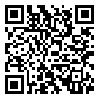







































BibTeX | RIS | EndNote | Medlars | ProCite | Reference Manager | RefWorks
Send citation to:
URL: http://ijml.ssu.ac.ir/article-1-69-en.html

 , Gholamreza Amiri
, Gholamreza Amiri 
 , Jafar Taherib
, Jafar Taherib 
 , Ali Noori
, Ali Noori 
 , Hamideh Gharamaleki
, Hamideh Gharamaleki 
 , Amin Mirzakhani
, Amin Mirzakhani 

Background and Aims: Quantum dots (QDs), as colloidal nanocrystalline semiconductors, present QD wavelengths in terms of biomedical assays and imaging, though the high toxicity of their core demands to be taken into consideration. Investigating this subject is taken into account as an important concept concerning use of these nanoparticles in the medical applications.
Materials and Methods: 10, 20, and 40 mg/kg doses of mentioned QDs were injected into some male mice. 10 days after CdSe/ZnS, and the serum sample of mice were measured in regard with FSH, LH and testosterone assays. The testis and body weight of various groups were determined.
Results: Within 10 days after injection of 40 mg/kg CdSe:ZnS, the serum LH concentration increased from 0.64 to 0.79 ng/ml and the serum testosterone concentration declined from 1.33 to 0.58 mIu/ml. Mean concentration of LH and testosterone CdSe:ZnS in 40 mg/kg dose showed high toxicity of CdSe:ZnS in 40 mg/kg dose. The FSH concentration did not reveal any significant differences compared to the control group. The body weight in all groups and the testicular weight in the treated mice with 10, 20 mg/kg CdSe QDs were similar to the control group. No significant changes were observed in regard with relative testis weights, whereas the testis weight decreased significantly from 0.093 to 0.055 gr (p< 0.01) in the mice receiving 40 mg/kg CdSe:ZnS.
Conclusions: Quantum dots were demonstrated to be capable of inducing detrimental effects on the reproductive systems of male mice. Since no study has been conducted in this realm, the present study can serve as an introduction to more studies regarding the effects of quantum dots toxicity on the development of male sexual system.
Received: 2015/12/5 | Accepted: 2015/12/5 | Published: 2015/12/5
| Rights and permissions | |
 |
This work is licensed under a Creative Commons Attribution-NonCommercial 4.0 International License. |



